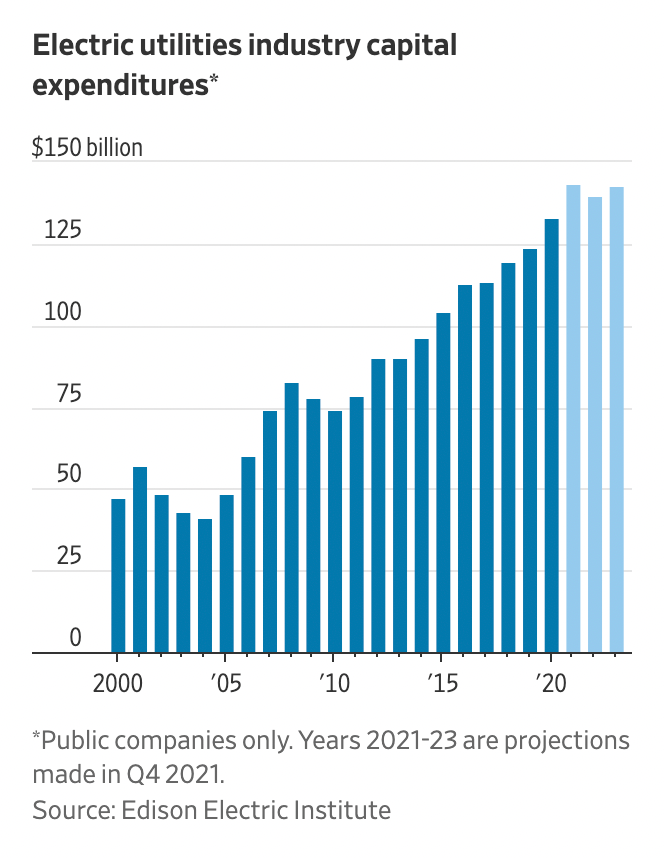Federal Land Leases Return
While campaigning, President Biden promised a halt to drilling on public lands. In 2021, he froze new lease sales on 245mn acres of public lands pending a review. The Department of the Interior published a report suggesting an overhaul of the lease approval process. But now, after prolonged pain at the pump and the Ukraine war, Biden has agreed to let the leasing of public lands begin again.
Here's the rundown:
80% less land is being leased than expected.
Royalty rates are increasing from 12.5% to 18.75%.
According to SPG, "The Interior Department did not say where the reduced acreage was located, only that the BLM reviewed parcels in Alabama, Colorado, Montana, Nevada, New Mexico, North Dakota, Oklahoma, Utah, and Wyoming."
America produces 7% of oil production and 8% of gas output on federal onshore lands.
Federal offshore acreage makes for about 16% of US oil output and 3% of gas output.
Restarting leasing will take months to years to produce new output, so it is unlikely to impact global oil prices.
Project Pele: Micro Reactors for Military Bases
The Pentagon recently announced that it will embark upon Project Pele, "a program intended to design, build, and demonstrate a mobile microreactor."
According to Military Times, "The project’s Program Manager, Dr. Jeff Waksman, told Military Times that the office expects to choose one of two designs submitted by BWXT Advanced Technologies, LLC, out of Lynchburg, Virginia, and X-energy, LLC, out of Greenbelt, Maryland, in the coming weeks."
They want to create a 40-ton reactor that fits in three-to-four 20-foot shipping containers and can generate 1-5 MW of power for up to three years before refueling. The reactor will take a new type of nuclear fuel currently under use at Idaho National Laboratory.
Dr. Waksman said, that testing and experimentation will occur in 2024, with demonstrations anticipated by 2025.
The Department of Energy, the Nuclear Regulatory Commission, the US Army Corps of Engineers, the National Aeronautics and Space Administration, and the National Nuclear Security Administration are all pitching in on the project.
According to the Pentagon's press release, "The Pele reactor is to be a single prototype, which will be demonstrated only within the United States, under the safety oversight of the Department of Energy. A decision by the DoD on whether or not to transition the technology and to use it operationally will be made at a future date."
Pele is named not for the Brazilian soccer player, but for the Hawaiian goddess of fire. It also stands for "portable energy for lasting effects."
Utilities Plan to Shell Out for Grid Resilience
Utilities are planning major upgrades to the grid, which will increase power bills. The Edison Electric Institute expects utilities to invest about $140 billion per year in 2022 and 2023, which is more than any other time in the 22 years they've been tracking the issue.
The WSJ reports, "Executives said the investments are critical to meeting renewable-energy targets and bolstering the reliability of the grid as outages become longer and more frequent. Climate change, they said, has heightened the need to simultaneously hasten the shift to carbon-free electricity sources and upgrade the grid to withstand severe weather patterns scientists link to rising temperatures."
One might wonder how making the grid more reliant on technology that is intrinsically vulnerable to "severe weather patterns" is supposed to help.

But the push for greater electrification is also pushing the utilities to commit to upgrades. The increase in EVs, municipalities moving from gas to electric ovens, the replacement of gas furnaces, etc. have burdened the grid with more demand.
"The increased spending is expected to result in higher electricity bills," reports WSJ, "as utilities are typically allowed to recoup the cost of capital investments, as well as a rate of return, from customers after receiving regulatory approval."
But the Ukraine war and the energy crisis might impact their plans--inflation and rising energy prices ripple out into every sector of the economy. The last time utilities faced a situation like this was during the energy and stagflation crisis in the 1970s. Nuclear met the chopping block, as it was the easiest expenditure to kill. Will these transmission upgrades to accommodate intermittent, subsidy-dependent generators like wind and solar face the same fate?
Conversation Starts
China's Guangdong province intends to boost its natural gas consumption by 65.5% by 2025. This is part of a plan that will involve phasing out and replacing coal in the province to reduce emissions and air pollution.
Rumor has it that France's debt encumbered EDF is looking to resolve its financial woes by potentially fully nationalizing and selling its renewables business to focus on nuclear energy.
Putin says he's already getting agreements for rubles for gas. It's already known that Armenia and Turkey are playing ball with the Kremlin, but it's unclear if anyone else has broken ranks with the EU.
Crom's Blessing
One man submarine.
